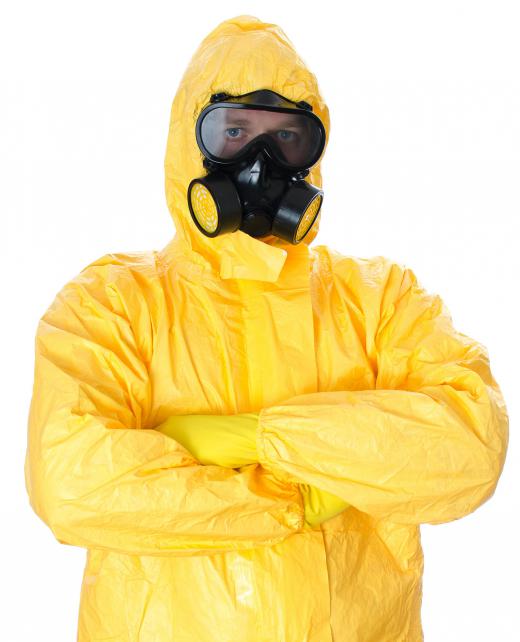While to a layperson the term safety equipment might seem to include certain items that assist with safety but not include others, which might be considered clothing, devices, or tools, rather than equipment; to those responsible for the quality and standards of such equipment, it includes equipment proper, along with apparel, headgear, footgear, first aid materials, devices, and tools. In addition, the layperson might assume that this equipment is protective gear for dangerous professions, when in fact, the bicycle helmet you or your child wears is considered safety equipment right along with items used by firefighters, hazardous materials (hazmat) teams, and search and rescue personnel.
Safety equipment for firefighters includes fire fighting boots, apparel, gloves, and helmets. These come in several designs, suitable for structural fires on the one hand and wildland fires on the other, with special versions for proximity fire fighting. Vapor-protective ensembles for fighting chemical flash fires, as well as self-contained breathing apparatus (SCBA)—not to be confused with self-contained underwater breathing apparatus (SCUBA)—which is used not only by firefighters, but also by fire responders, industrial workers, specialists involved in decontamination, and urban search and rescue. Personal Alert Safety Systems (PASS), which sound a helps signal if a firefighter becomes incapacitated, are another important piece of safety equipment.

Fall protection safety equipment of a number of types is made for people who typically work in high places, such as construction workers, electrical line workers, sometimes called linemen, and search and rescue personnel, when needed. This includes vertical life lines, full body harnesses, and energy absorbing lanyards, as well as arc-resistant versions of the same.

Life safety ropes and systems are examples of safety equipment used by search and rescue teams, as well as tactical teams involved in security and police work or military operations, though they are also used by window washers. Depending on the situation, rescue teams may also use powered rescue tools, such as hydraulic cutters, power units, and spreaders. Emergency Medical Service (EMS) workers have protective clothing for emergency medical operations.

Hazmat teams have a variety of specialized safety equipment including protective liquid splash footwear and garments and other protective ensemble, including chemical/biological terrorism protective clothing. Gas detector tubes, with or without a sampling pump, provide on-the-spot analysis of possible hazardous airborne materials. Specialized versions are made particularly for confined spaces, nuisance odors, and toxic atmospheres. Other safety equipment includes industrial protection for head, feet, and body, eye and face protection, emergency eyewash and shower, and air-purifying respiratory smoke escape devices, for example.

